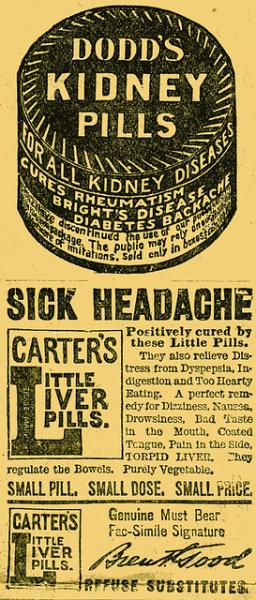The FDA just released its new guidelines on direct-to-consumer (DTC) pharmaceutical advertising indicating that they now must include their list price. As Secretary Azar so succinctly stated,
“You’ve got to level with people what your drugs cost. Put it in the TV ads. Patients have a right to know — and if you're ashamed of your drug prices, change your drug prices.”
Of course, the new directive comes with some caveats; it must be a medication covered by Medicare or Medicaid, priced at over $35 monthly or for the full treatment course. And the required statement comes with a bit of lawyerly ambiguity,
“The list price for a 30-day course or a typical length of treatment of [Drug Name] is $X. If you have health insurance that covers the drugs, your cost may be different.”
Most importantly, the rule will be enforced, not through the federal government, but by shaming or competitive pharmaceuticals suing over “unfair competition.”
It is a step, albeit a very tiny baby step, in the right direction. We will now have the manufacturer’s suggested retail price (MSRP) for medications, and it will be as useful to patients as the MSRP is to car buyers.
Because of well-publicized, but poorly measured, discounts along the supply chain from manufacturer to distributor to the point of sale, with a momentary pause for a cut by pharmacy benefit managers, no one will be paying the MSRP. So good news, everyone will see a discount on what they pay versus what the ad reports. The bad news is that since the various discounts and rebates differ for each medication, and insurance plan, that list price-MSRP will not even be a consistent way to factor in how much of a discount is being made.
Extending my car-buying analogy for just another moment; several apps have appeared providing you with the price of a car at your dealership, along with the range of costs real customers have paid. Now, creating that app for the myriad of insurance companies and their plans is both an enormous and thankless task, I doubt if you could get enough advertising onto the app to cover the investment in creating the dataset. But, the insurance companies already have the information, and if we really want to inspire competition, maybe we should require that they provide a means to access that information quickly. Now patients could see in real time what their costs will be and discuss it with their physicians. And the price of creating that app, it shouldn’t even make a sizable dent in the $59 million the CEO of Aetna or other insurance company executives received in 2017 – they can think of it as the cost of doing business.
There is another problem with this idea of competition in pharmaceutical sales, again car buying is illustrative. The price of cars will vary with the add-ons, you know, the navigation, sound or trim package. Here buyers have a reasonable chance of weighing the features and costs. But how about for medications?
Not all medications are the same;, to carve out a market niche, they all differ in some ways. For instance, Empagliflozin is marketed not for its management of diabetes, but its additional “heart benefit” for those patients with diabetes and known heart disease. How much more are you willing to pay for the benefit? And now there is evidence that this class of medications may result in “rare instances” in infection of your pelvis, Fournier’s Gangrene, that carries a 15-50% mortality and is a surgical emergency. How does that affect your thinking about the price?
Do we need to find a way to control spending on medications? Absolutely. But these newly announced measures, requiring an MSRP for pharmaceuticals, gives us regulation without any benefit, other than whatever political advantage accrues to those policymakers who are “trying.” The Kabuki dance has been completed; the administration took a tough stance, the drug manufacturers were taken aback and then taken down, presumably quacking in fear. Of course, patients are no closer to knowing the real cost of their medications than before; and they still have no way to intelligently navigate their options.




